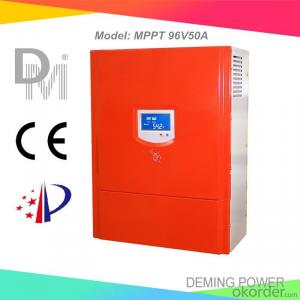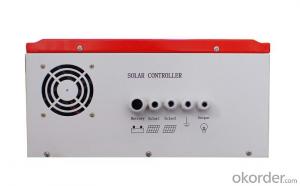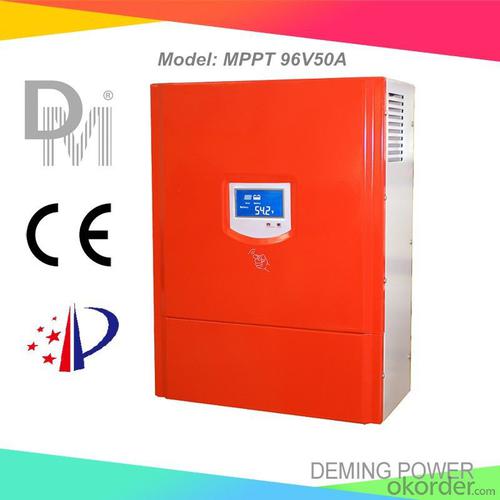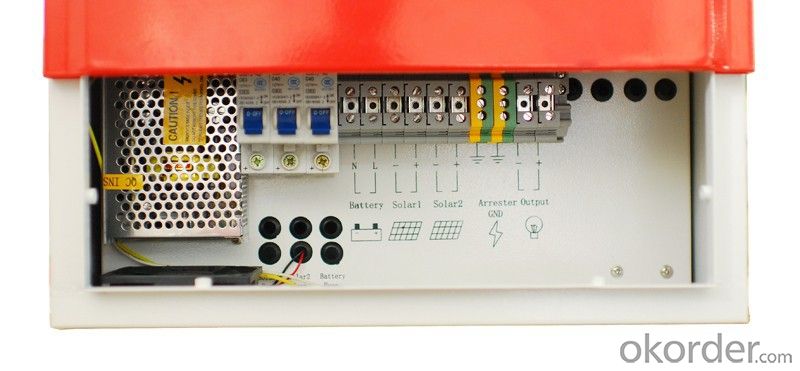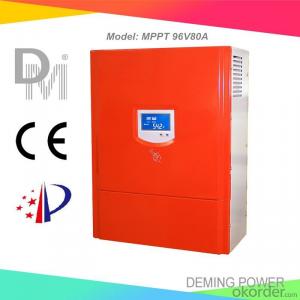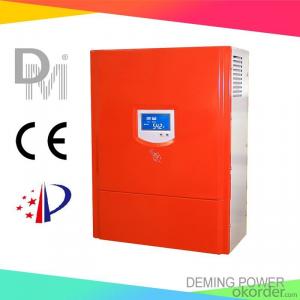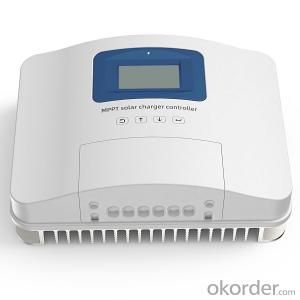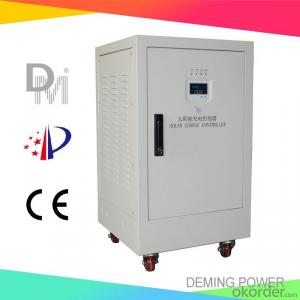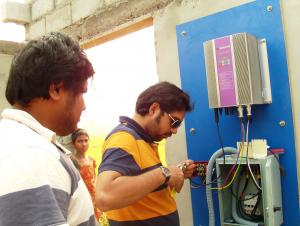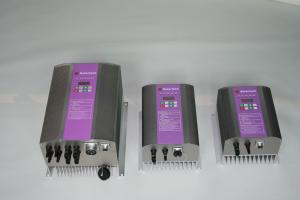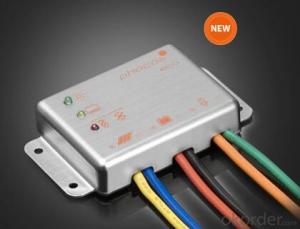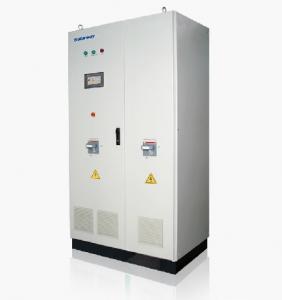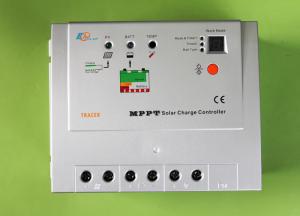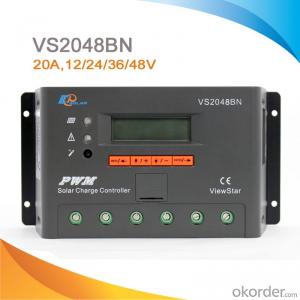Genasun Mppt Solar Charge Controller 96V 50A for Solar Power System
- Loading Port:
- Qingdao
- Payment Terms:
- TT or LC
- Min Order Qty:
- 1 PCS
- Supply Capability:
- 1000 PCS/month
OKorder Service Pledge
OKorder Financial Service
You Might Also Like
Properties of the solar charge controller
1. Design for off-grid solar power system.
2. Applicable to different kinds of batteries.
3. Adopts MPPT technology (Maximum Power Point Tracking). The advanced tracking algorithm make the solar module operate at ideal voltage which the solar modules can produce the maximum available power.
4. Modular design with simple structure and easy maintenance.
5. Automatic power control function.
Technical parameters of the solar charge controller
Model | 96V50A | |||||
Battery group rated voltage | 96Vdc | |||||
PV Rated current | 50A | |||||
PV open circuit voltage | 400V | |||||
PV Max. power | 4800Wp | |||||
Input PV module road number | 1 | |||||
Function | MPPT charge mode, auto stop charge, auto recharge voltage; Protection: connecting contrary, over current, short circuit, over heat etc. | |||||
Display mode | LCD | |||||
Display content | solar panel voltage, solar panel current, solar panel power, battery voltage, charge current | |||||
MPPT DC voltage range | 80-116Vdc | |||||
Floating Charge Voltage (adjustable) | 110Vdc | |||||
Stop charge voltage | 116Vdc±1% | |||||
Recharge voltage | 108V±1% | |||||
Voltage drop between PV and battery | 1.5V | |||||
Max itself power consumption | 100mA-150mA | |||||
Work environment temperature | -30-60°C | |||||
Relative humidity | 90% No condensation | |||||
Applicable altitude | 3000m The rated power should be reduced when it is higher than 2000m | |||||
Noise (1m) | 40dB | |||||
Degree of protection | IP20(Indoor) | |||||
Cooling method | Forced air cooling | |||||
*Communication interface (optional) | RS485/USB/GPRS/Ethernet | |||||
*Temperature compensation(optional) | -4mv/°C/2V,-35°C~+80°C,Accuracy:±1°C | |||||
Product size (mm) | 480*370*160mm | |||||
Product Weight(kg) | 12kg | |||||
*Above parameter only for reference. Could be custom made to user specifications.
Image
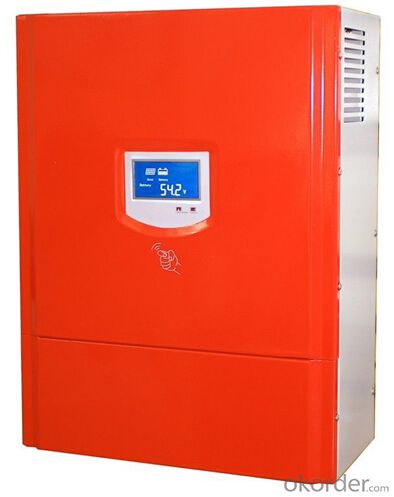
FAQ
Q1:Can we visit your factory?
A1:Sure,welcome at any time,seeing is believing.
Q2:Which payment terms can you accept?
A2:T/T,L/C,Moneygram,Paypal are available for us.
- Q: How does a solar controller handle voltage fluctuations in the battery?
- A solar controller handles voltage fluctuations in the battery by continuously monitoring the battery's voltage level and adjusting the charging current accordingly. It regulates the flow of electricity from the solar panels to the battery, ensuring that the battery is charged at the optimal voltage and preventing overcharging or undercharging. This helps to maintain a stable and safe voltage level in the battery, maximizing its lifespan and overall performance.
- Q: Are there any safety precautions I should take when using a solar controller?
- Yes, there are a few safety precautions to take when using a solar controller. 1. Familiarize yourself with the product's user manual and instructions before installation or operation. This will help you understand the specific safety guidelines provided by the manufacturer. 2. Ensure that the solar controller is properly installed and connected according to the instructions provided. This includes the correct wiring and grounding procedures. 3. Avoid contact with any live electrical components while installing, operating, or maintaining the solar controller. Always turn off the power source and wear appropriate protective gear, such as insulated gloves, when necessary. 4. Regularly inspect the solar controller for any signs of damage, wear, or loose connections. If any issues are detected, promptly disconnect the power source and consult a professional for repairs or replacements. 5. Do not expose the solar controller to extreme temperatures, moisture, or direct sunlight, as it can affect its performance and durability. Install it in a well-ventilated and protected area, if possible. 6. In case of any abnormal behavior, such as unusual noises, smoke, or sparks, immediately disconnect the power source and contact a qualified technician for assistance. Remember, while solar controllers are generally safe to use, it is essential to prioritize safety precautions to minimize potential risks and ensure the optimal performance of your system.
- Q: How does a solar controller protect batteries from over-discharging?
- A solar controller protects batteries from over-discharging by monitoring the battery voltage and disconnecting the load when the voltage drops below a certain threshold. This prevents the battery from being drained excessively, which can lead to permanent damage and reduce its lifespan.
- Q: How does a solar controller handle the display of system information?
- A solar controller handles the display of system information by collecting data from various sensors and components within the solar power system, such as the solar panels, battery, and load. It then processes and interprets this data to calculate and display important system information, such as the current battery voltage, charging status, load consumption, and other relevant parameters. This display can be in the form of an LCD screen or LED indicators, providing real-time information about the system's performance and enabling users to monitor and optimize their solar power system effectively.
- Q: What is the cost of a solar controller?
- The cost of a solar controller can vary depending on several factors such as brand, capacity, features, and quality. On average, a basic solar controller can range from $20 to $50, while more advanced models with additional functionalities can cost anywhere from $50 to $200 or more.
- Q: Can a solar controller be used in a solar-powered marine system?
- Yes, a solar controller can be used in a solar-powered marine system. A solar controller is designed to regulate the charging process of solar panels, ensuring that the batteries are charged efficiently and safely. Therefore, it can effectively manage the charging of batteries in a marine system, maximizing the utilization of solar power and extending battery life.
- Q: What is the maximum charging voltage that a solar controller can provide?
- The maximum charging voltage that a solar controller can provide depends on the specific model and its design. However, in general, most solar controllers have a maximum charging voltage of around 14-15 volts for a 12-volt system and 28-30 volts for a 24-volt system. It is important to refer to the manufacturer's specifications and guidelines for the exact maximum charging voltage of a particular solar controller.
- Q: How do I connect a solar controller to a solar-powered water heater?
- To connect a solar controller to a solar-powered water heater, start by identifying the appropriate terminals on both the controller and the water heater. Typically, the controller will have labeled terminals for connecting the solar panel, battery, and load. The solar-powered water heater should have terminals for connecting the solar collector and the storage tank. Once you have identified the terminals, connect the solar panel's positive wire to the controller's solar panel terminal, and the negative wire to the controller's negative/ground terminal. Next, connect the solar collector's positive wire to the water heater's solar collector terminal, and the negative wire to the water heater's negative/ground terminal. Ensure all connections are secure and tight, and then power on the solar controller. The controller will regulate the energy flow from the solar panel to the water heater, maximizing efficiency and temperature control. Make sure to consult the user manuals for both the solar controller and water heater for any specific instructions or nuances related to your particular setup.
- Q: Can a solar controller be used in a solar-powered electric scooter charging system?
- Yes, a solar controller can be used in a solar-powered electric scooter charging system. The solar controller plays a crucial role in regulating the flow of electricity from the solar panels to the battery of the electric scooter. It ensures that the charging process is safe and efficient by monitoring and controlling the voltage and current.
- Q: How does a solar controller prevent damage from overloading of the load?
- A solar controller prevents damage from overloading of the load by continuously monitoring the current flowing from the solar panels to the load. When the current exceeds the controller's rated capacity, it automatically cuts off the power supply to the load, thus preventing any damage that could occur due to overload.
Send your message to us
Genasun Mppt Solar Charge Controller 96V 50A for Solar Power System
- Loading Port:
- Qingdao
- Payment Terms:
- TT or LC
- Min Order Qty:
- 1 PCS
- Supply Capability:
- 1000 PCS/month
OKorder Service Pledge
OKorder Financial Service
Similar products
Hot products
Hot Searches
Related keywords
